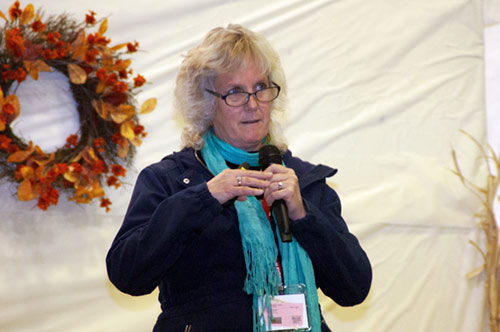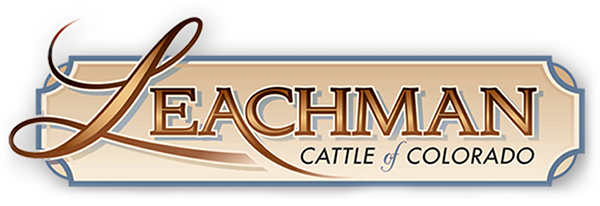Is It A Better Alternative?
Alternative meat, alternative statistics: What do the data say?
MITCHELL, Neb. (Nov. 19, 2019) — Alternative meats are getting a lot of press. Are they making as big of a splash as they seem? Do cattlemen need to be worried about a competing protein source? Alison Van Eenennaam, cooperative extension specialist in animal biotechnology and genomics at the University of California–Davis, looked at the data to see the likely effects on the livestock industry.
The scientist told attendees of the 2019 Range Beef Cow Symposium in Mitchell, Neb., Nov. 18-20 that all alternative meat falls into two categories — (1) vegan meat replacements and (2) “in-vitro” or “cultured” meat.
 |
“If we’re proposing to take our animals out of the system and replace it with factory farming using energy or electricity, are we actually going the right way if our concern is trying to reduce the environmental footprint of our food production?” asked Alison Van Eenennaam, University of California–Davis.[Photo by Troy Smith] |
The vegan meat replacements are plant-protein concentrates that are broken down, added to, processed and formed into patties. The Impossible BurgerTM and Beyond Burger® are examples.
The in-vitro, or cultured meat, products are adult stem cells, called satellite cells, extracted from animals. One cell is sufficient for the process and the animal lives. Van Eenennaam explained that the cells are added to a bioreactor along with the cell culture, which causes the cells to multiply exponentially. Changing the culture conditions pushes the cells to become muscle, fat and connective tissue. The cells are structured with a three-dimensional “scaffolding” of muscle fibers, and muscle fibers are combined with fat to meat. Memphis Meats, New Age Meats, and JUST are examples.
However, she noted, there is not a process to proliferate enough fat cells to create the same taste in something as large as a steak. The processes are still advancing.
With sustainability as their watchword, venture capitalists are sinking money into these two types of alternative protein. In 2018, cultured meats garnered $50 million in global funding, and vegan replacements garnered $900 million in global funding.
She shared research projecting that, in 2040, 40% of global meat consumption will be through conventional meat, 25% will be vegan meat replacements, and 35% will be cultured meat.
However, nobody is buying it yet. There is money to be made, at least for the vegan burgers; for instance, with Burger King’s sale of the Impossible Burger Whopper.
Who regulates these and thus enforces the rules? The Food and Drug Administration oversees cell collection, cell banks, and cell growth and differentiation. The transfer from the FDA and the USDA occurs during the cell-harvest stage. The USDA also oversees the production and labeling of food products derived from the cells of livestock and poultry.
The kicker for the sustainability argument is the cultured meat would replace a biotic system with a fermentation factory run on electricity, Van Eenennaam said.
“If we look specifically at the U.S., we have about 9% of our greenhouse gas emissions coming from agriculture. And when you break down where most of our emissions are coming from, it's coming from the production of electricity and industry. If we’re proposing to take our animals out of the system and replace it with factory farming using energy or electricity, are we actually going the right way if our concern is trying to reduce the environmental footprint of our food production?”
She went on to say that of agriculture’s 9% of greenhouse gasses, livestock account for less than 4%. If everyone went vegan and we got rid of all livestock, then greenhouse gasses would be reduced by 2.6%, but humans would be left with a fairly big deficit in nutrients provided by animal source proteins.
Animal production is a critical component of the U.S. economy, and 40% of the value of global agricultural output. She concluded that growing animal cells efficiently and keeping contaminants out of the system and end product requires energy, attentive management and innovation. This is true whether that meat is produced in a natural system powered by solar energy and the physiology of cattle, or in an industrial system using electricity & a bioreactor to produce cultured product in a fermentation factory.
Listen to Van Eenennaam’s presentation, view her PowerPoint and read the proceedings accompanying the presentation in the Newsroom at www.rangebeefcow.com.
Editor’s Note: This summary was written under contract or by staff of the Angus Media, which retains the copyright. To request to reprint this article, contact Shauna Rose Hermel, editor, at 816-383-5270. PowerPoints are posted with permission of the presenter and may not be reproduced in whole or in part without the express permission of the presenter. Angus Media claims copyright to this website as presented. We welcome educational venues and cattlemen to link to this site as a service to their audience.
Angus Media's coverage of the event is made possible through collaboration with the event committee and via sponsorship of Leachman Cattle of Colorado. For questions about this site, or to notify us of broken links, click here. Look for additional coverage in the Angus Journal, the Angus Beef Bulletin, the Angus Journal Daily, and the Angus Beef Bulletin EXTRA.



